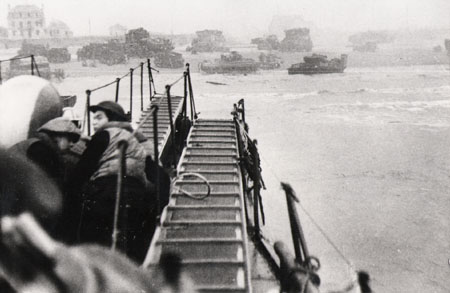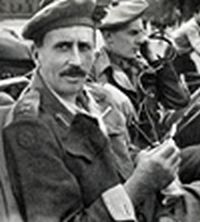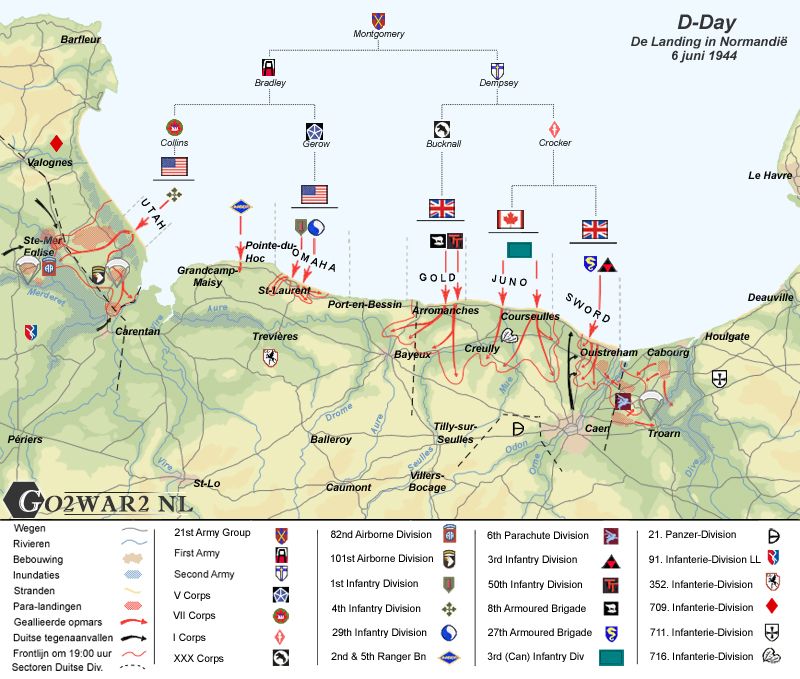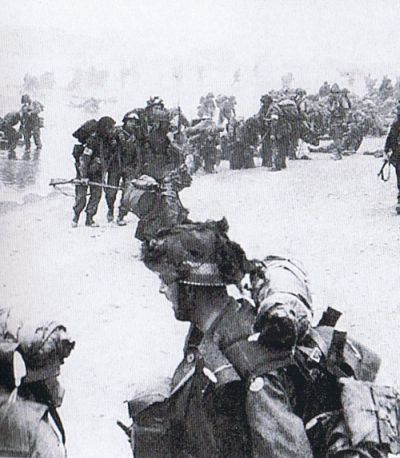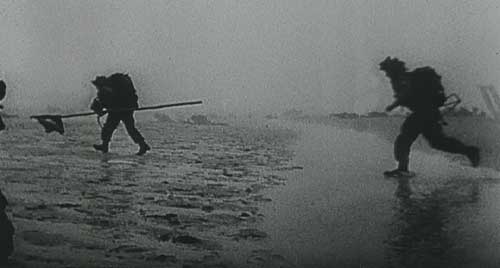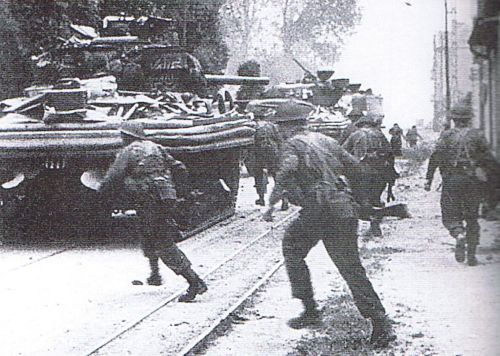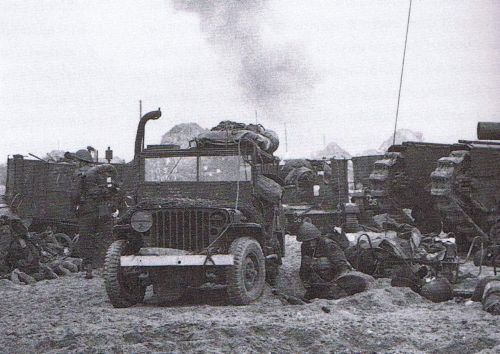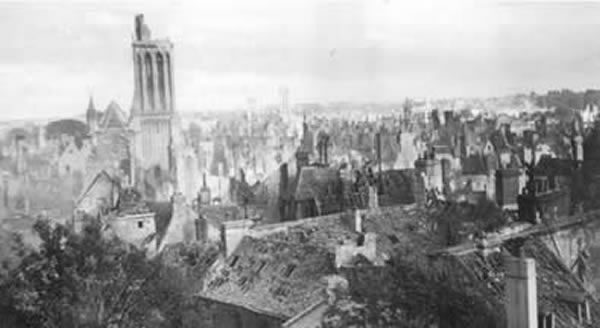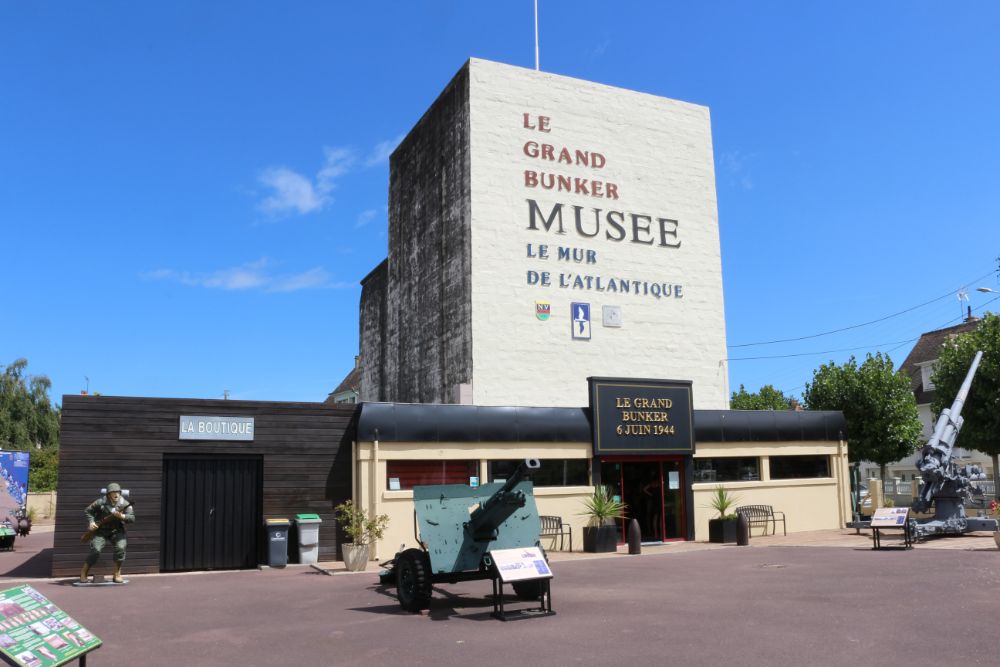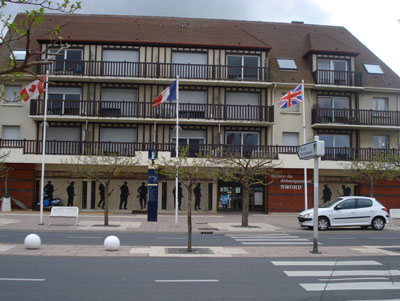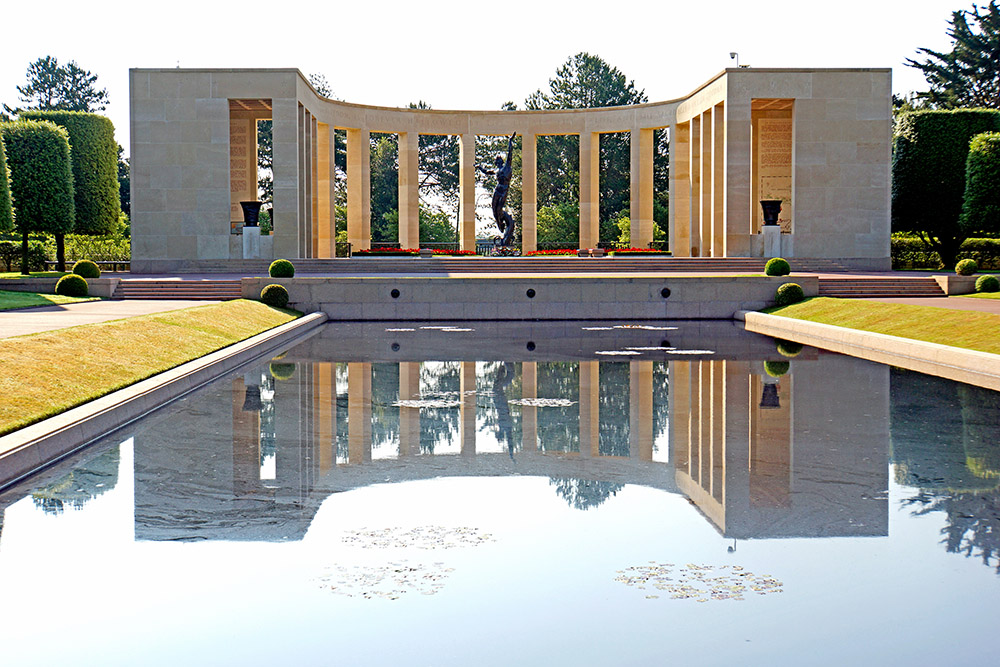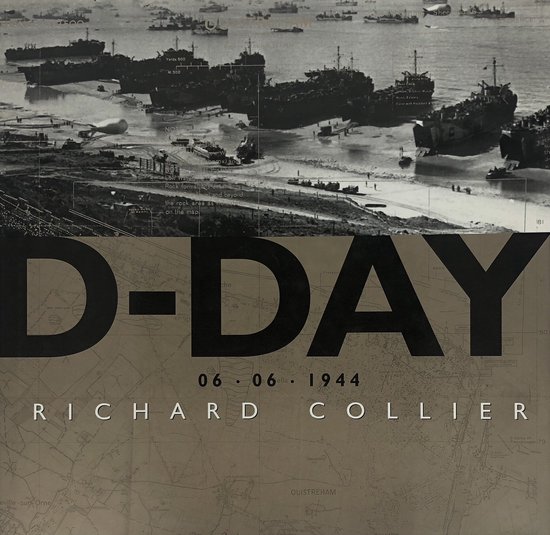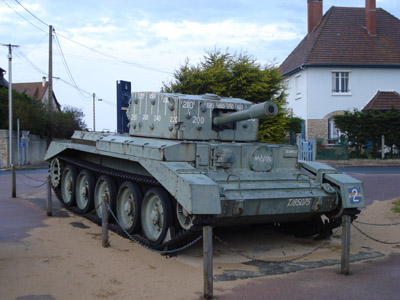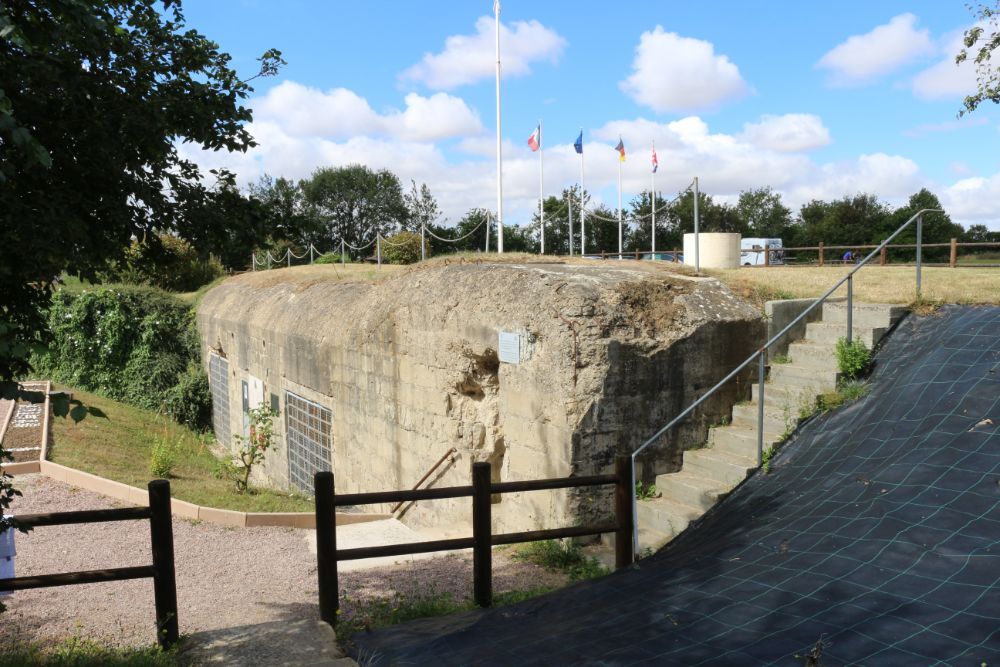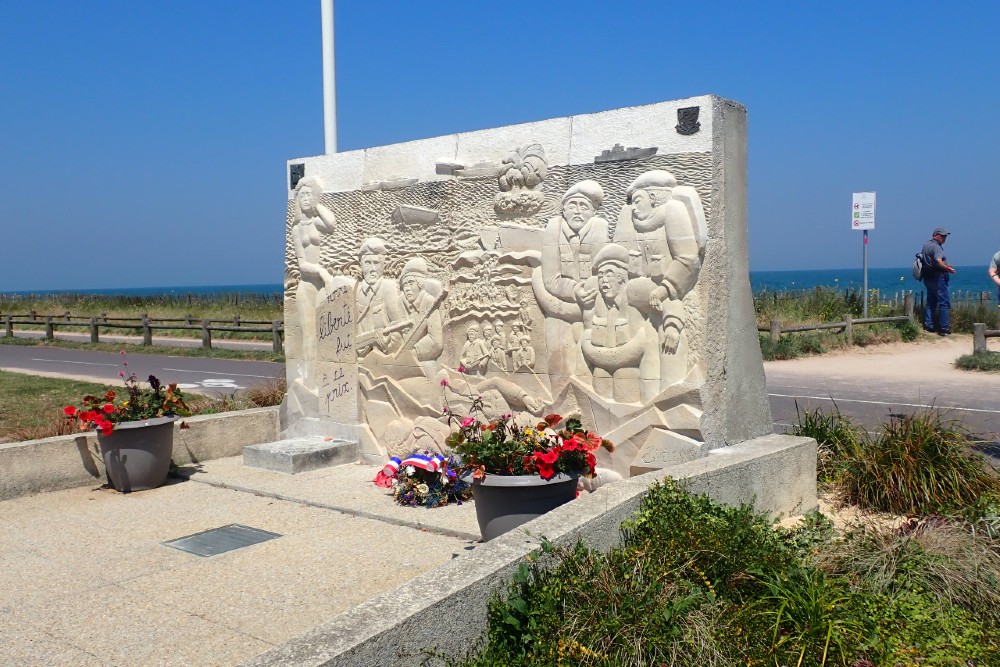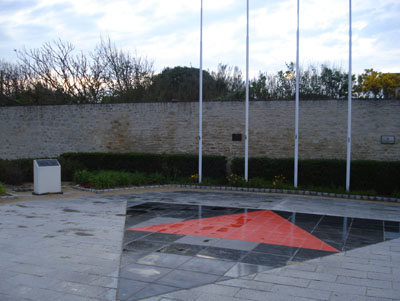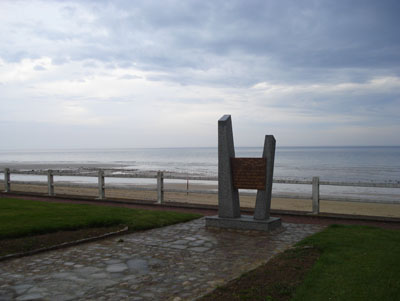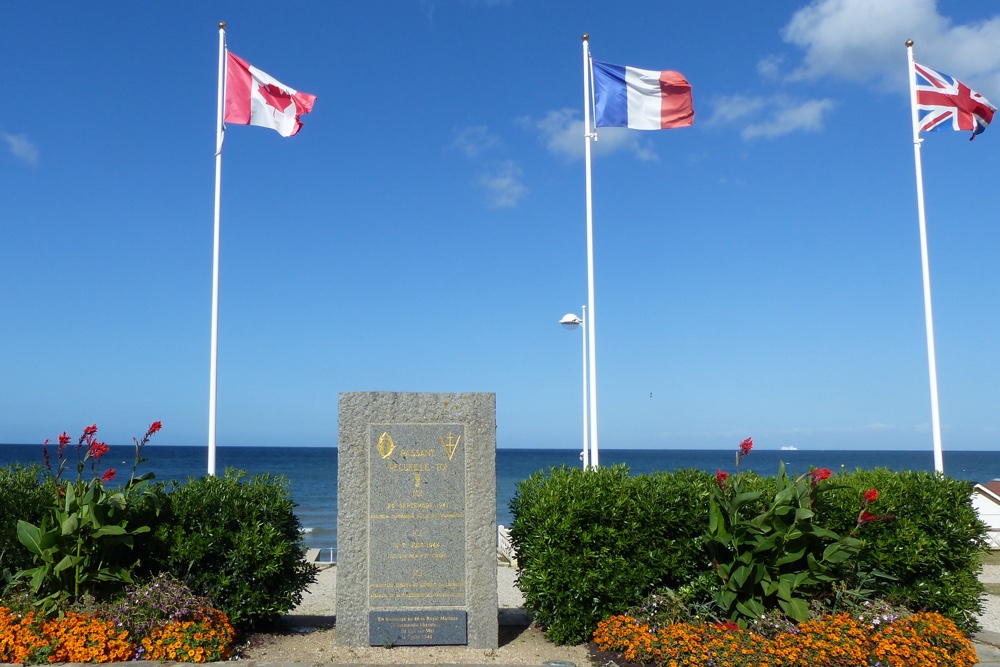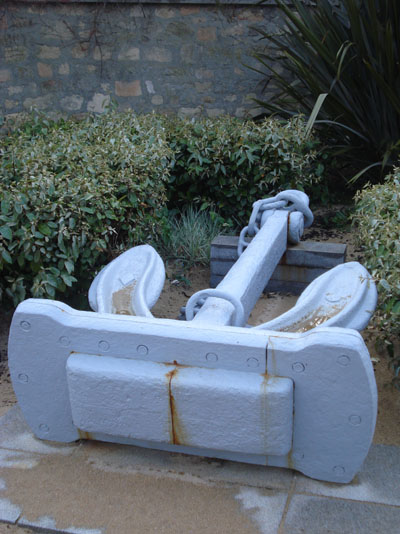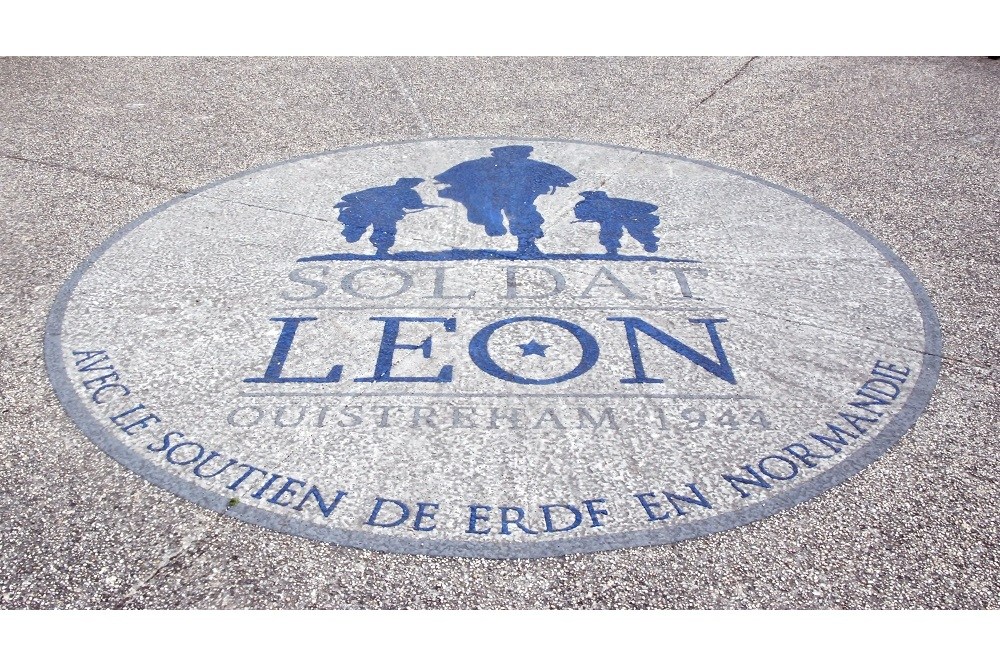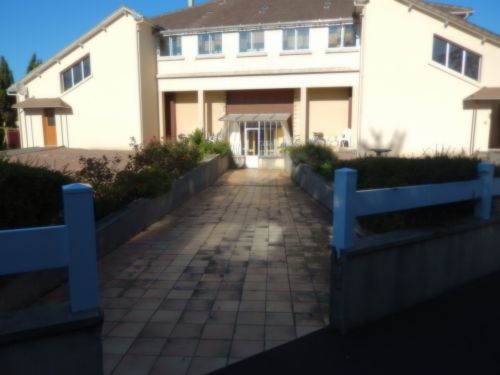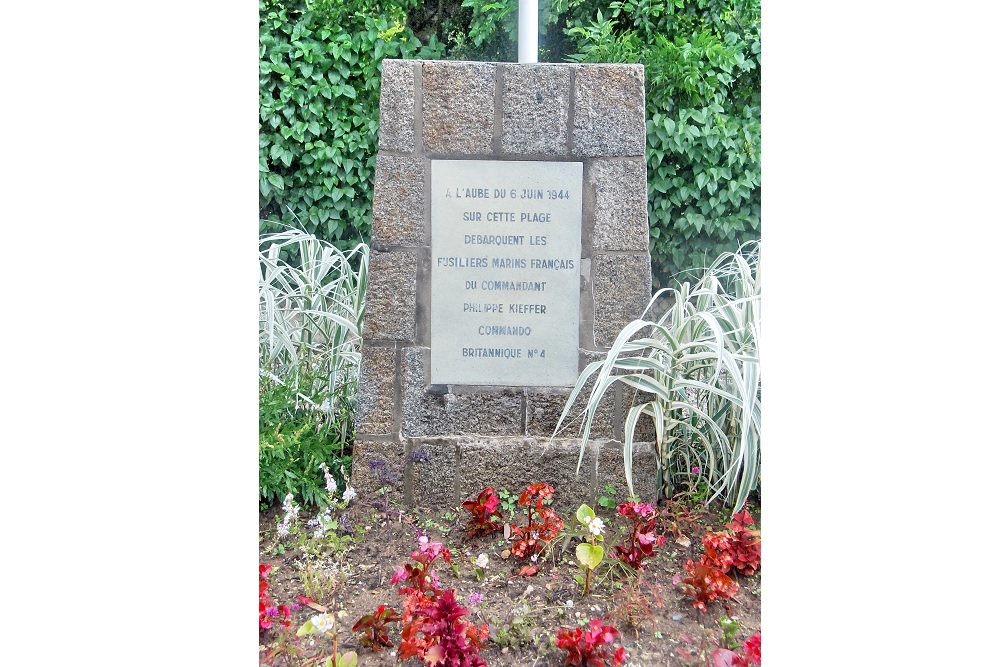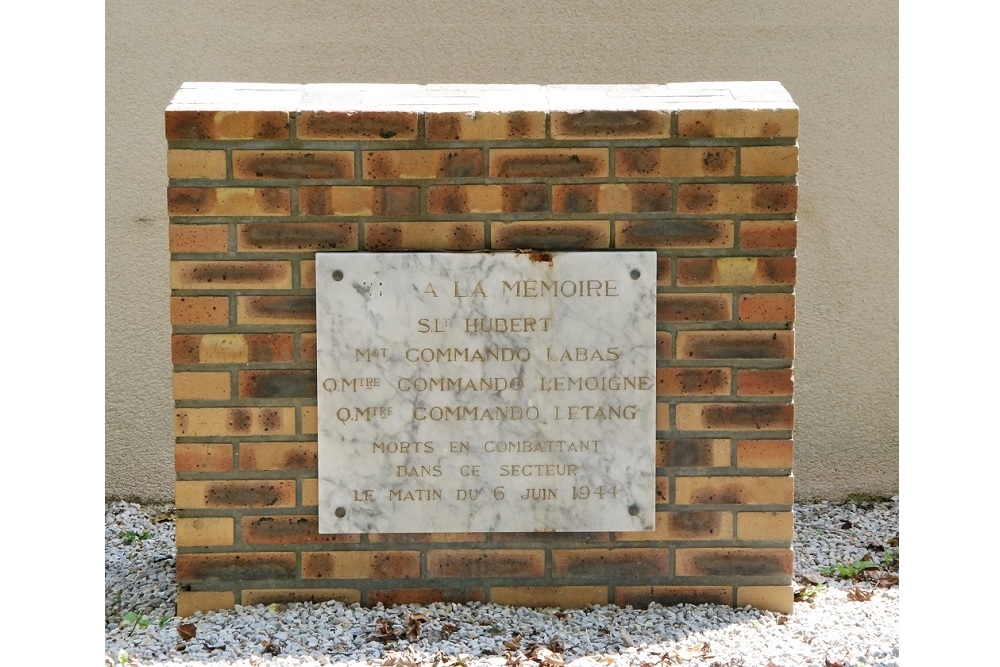Introduction
June 6, 1944 was a very important date for the liberation of Europe. On this day, the largest amphibious landing in the history of the European continent took place, Operation Overlord, when more than 130,000 British, American, and Canadian troops set foot on French soil in Normandy. Their task was to break through Hitler’s Atlantic wall. Operation Overlord claimed the life of thousands of young men and the Third Reich never recovered. The tide definitively turned in favor of the allied forces.
Planning
Sword Beach was the leftmost of the five invasion beaches from an allied point of view. Sword Beach covered the coast between the village of St.-Aubin-sur-Mer and Ouistreham, at the mouth of the river Orne. The British 3rd Infantry Division, commanded by Major-General Thomas Rennie, commandos of the 1st Commando Brigade, commanded by Lord Simon Lovat and French command troops commanded by Capitaine Philippe Kieffer, would land on this stretch of coast.
The British had to move inland from the beach as quickly as possible, connecting with the 6th Airborne Division, which had been dropped to protect the flank of the 3rd Infantry Division from an attack by the 21. Panzer-Division, and capture Caen as soon as possible.
The first wave of attack consisted of three regiments of the British 3rd Infantry Division. In the right sector, Peter, the South Lancashire Regiment landed, the Suffolk Regiment landed in the Queen sector and the East Yorkshire Regiment landed in the Roger sector. All regiments were supported by DD tanks. A total of twenty-five DD tanks had to land during the first landing wave, of which twenty one made it to the beach. These tanks had a waterproof skirt of rubber and canvas and a propeller that was connected to the engine. This allowed these tanks to "swim". The second wave of attack consisted of the 1st Commando Brigade commanded by Brigadier-General Lord Lovat. The brigade consisted of the 3rd, 4th and 6th Commando and the 41st and 45th Commando British Royal Marines. This landing wave would also be supported by tanks.
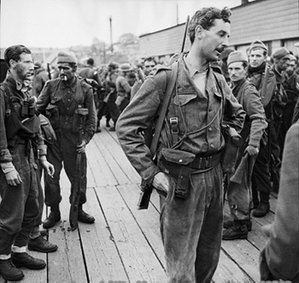
Lord Lovat, Commander of the Command Forces. This picture was taken in Newhaven, after the return of the raid on Dieppe, August 1942. Source: Imperial War Museum.
The intention was that the troops that had landed first would conquer the exits of the beach so that the command troops could advance inland. Later in the morning, more troops of the British 3rd Infantry Division would land on Sword Beach; the Lincolnshire Regiment, the King's Own Scottish Borderers, the Royal Ulster Rifles, the Royal Warwickshire Regiment, the Royal Norfolk Regiment and the King's Shropshire Light Infantry.
The French commandos, the 10th Inter Allied Commando belonging to the 4th Commando, had been assigned a separate task for D-Day. They were the only French troops to land on D-Day. These troops had been evacuated from Dunkirk four years ago or had escaped from Vichy-France. They had joined the Free French of General Charles de Gaulle and wanted nothing more than to liberate their homeland from the German occupation. They were therefore eager to go and were motivated to the core. They had to eliminate Riva-Bella's position, a place fortified by the Germans near Sword Beach. They also had to clear Ouistreham of German troops and then head inland to make contact with the airborne troops who should be there.
Sword Beach was defended by the 716. Infanterie-Division. The beach made a slight curve, which was to the advantage of the defenders, they could also attack from the side and the different lines of fire overlapped in a true crossfire. Near Sword Beach was the fortified Riva-Bella. Around the town the Germans had built Widerstandsnest 18, which consisted of about eighty bunkers spread over two coastal locations. It contained six reinforced positions with cannon caliber of 15 cm and a range of 13 miles. Furthermore, the Widerstandsnest had four 7.62 cm Russian field guns, seven German 50 cm caliber guns, three of which were in casemates, two towers of Renault tanks, mortars of 5 and 8.1 cm, an anti-aircraft gun caliber 22 mm) and two armored machine gun towers. There were also two flanking bunkers with 7.62 cm Russian field guns. The defense was directed from a concrete tower which served as a command post. The tower had four floors and a 20 mm anti-aircraft gun on the roof.
However, it wasn't the 716. Infanterie-Division that worried Major-General Rennie the most, but the 21. Panzer-Division that was stationed further inland. Rennie feared that the armored division of the Germans would slow down the British advance and that the Germans might push the British back into the sea. In reality, the 21. Panzer-Division was no longer such a strong force as Rennie feared. It was in fact the only armored division in the West. The Germans had ten armored divisions in the West, which had been found unfit to fight on the Eastern Front. The division had built up a unit that had made a name for itself in Africa, but was almost completely destroyed in May 1943. Part of the division's equipment now consisted of French equipment which the Germans had captured from the French defenders during the invasion of France in 1940. However, there was a reserve officer serving in the 21. Panzer-Division who had connections in the German armaments industry. He made sure that some vehicles were assembled in an improvised way. Despite the British overestimating the combat strength of the 21. Panzer-Division, it was still a formidable opponent for the British attack troops on D-Day. Hour H, the time when the landings were scheduled to begin and the landings also commenced, was set at 17:30 for Sword Beach.
Definitielijst
- Brigade
- Consisted mostly of two or more regiments. Could operate independently or as part of a division. Sometimes they were part of a corps instead of a division. In theory a brigade consisted of 5,000 to 7,000 men.
- caliber
- The inner diameter of the barrel of a gun, measured at the muzzle. The length of the barrel is often indicated by the number of calibers. This means the barrel of the 15/24 cannon is 24 by 15 cm long.
- cannon
- Also known as gun. Often used to indicate different types of artillery.
- D-Day
- The day of the long awaited invasion of western Europe in Normandy, France, 6 June 1944. After a long campaign of deception the allies attacked the coast of Normandy on five beaches to begin their march on Nazi Germany. Often explained as Decision Day, though this is entirely correct. The D stands for Day as generally used in military language. In this case it means an operation beginning on day D at hour H. Hence “Jour J“ in French.
- Infantry
- Foot soldiers of a given army.
- invasion
- Armed incursion.
- machine gun
- Machine gun, an automatic heavy quick firearm.
- Regiment
- Part of a division. A division divided into a number of regiments. In the army traditionally the name of the major organised unit of one type of weapon.
The landings
The DD tanks had to kick off during the landings on Sword Beach. However, the sea was so rough, that the tanks could only be launched 3 miles (five kilometers) off the coast, instead of the originally planned 5 miles (eight kilometers). The tanks had the greatest difficulty getting ahead in the water and were soon overtaken by the landing craft with infantry. The first LCA's and LCT's ran aground shortly after the hour H had passed. Frog troops dropped over the edges of their vessels into the water and started to clear the obstacles. The infantry also left their vessels and waded to the beach. They were attacked by machine gun and mortar fire. As a result of the machine gun and mortar fire, the British suffered heavy losses and a number of soldiers were in shock, but a large number of soldiers managed to cross the beach and began to attack the German defenders. Meanwhile, the tanks emerged from the water onto the beach. The Sherman and Churchill tanks proved to be of great value in firing at the German defenders. With their .50 machine guns and their cannons, they provided the British troops the fire support that the Americans so dearly lacked on Omaha. They also offered a welcome cover for the men who still had to cross the beach.
The 'Hobart's Funnies' turned out to be very important for the success of the attack on Sword Beach. Flail tanks, with iron chains attached to them, that detonated mines when touching the ground, without causing any casualties, swept paths across the beach and roads towards the inland. Other "Funnies" laid their folding bridge over the sea wall, yet other tanks and bulldozers filled the anti-tank ditches with bundles of twigs. The importance of the 'Hobart's Funnies' is evident from a statement by Major Kenneth Ferguson: "We owe our lives to those tanks, there is no doubt about that".
Although the first landings on Sword Beach went smoothly, not all predefined targets were met. The attack troops were not able to penetrate directly inland, they were stopped by mortar and machine gun fire and snipers. The commandos of Lord Simon Lovat should have been able to move inland without much resistance to make contact with the paratroopers. However, this could not take place now. The British had to concentrate their troops at certain points in order to force a breakthrough there. As a result, the troops that had set out to conquer Caen were now stuck at the beach. The British were soon behind schedule.
After the breakthrough was forced, the commandos of the 41st command, the Royal Marines had to move on to Lion-sur-Mer. Soon, however, they were delayed again. It was about 1:30 in the afternoon. Near Lion-sur-Mer, a little further inland in a forest, was a German artillery battery which now continuously fired at them and the troops on the beach. Around the battery large numbers of German infantrymen were dug in. It was impossible for the commandos to disable the battery through a frontal attack by infantry. Among the commandos was an artillery observer from the Navy. He contacted the Polish destroyerSlazak. Despite the fact that the observer was unable to provide exact coordinates, theSlazak decided to fire. The first shelling’s did not have the desired effect. However, a new shelling did reach the intended target, just in time since the Polish destroyer had no ammunition left to continue the firing.
For Lord Simon Lovat, commander of the commando troops that were to land in the second wave of attack, was the second time he set foot on French soil while the country was occupied by the Germans. In 1942 his commandos destroyed a German reinforcement in Dieppe, but the landing at Dieppe had further failed. On D-Day he and his commandos, with the exception of the Royal Marines and the French commandos who had their own missions, had to advance to the Pegasus Bridge to relieve the British airborne troops of Major Howard. Lovat's commandos were slightly behind schedule because of the delay after the landings. With a bagpipe player at the head of the column, the troops started to advance to the Pegasus Bridge. To get to the bridge they had to advance through swampy terrain. Under enemy fire this was a difficult task, but the commandos managed to cross the swamp quite easily. On their way to the Caen canal, two more small bunkers had to be taken out, but this went without too much heavy fighting and losses.
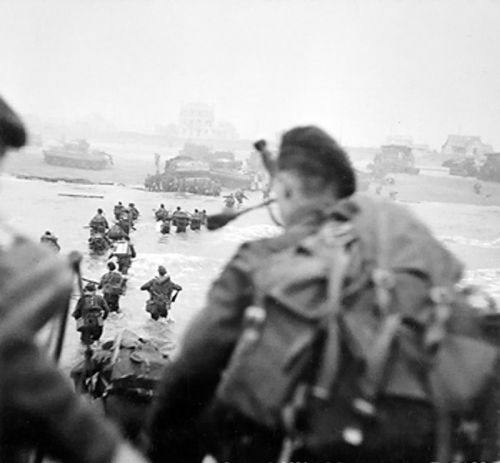
Lovat's commandos are going ashore. The person on the right is Lovat himself. Source: Imperial War Museum.
The French commandos of Capitaine Philippe Kieffer had to conquer the fortified village of Riva-Bella and then advance to Ouistreham to clear the town of German troops. Without suffering too many losses on the beach, only a few casualties due to artillery fire and fire from lighter weapons, the French quickly crossed the sea wall and entered Riva-Bella. The German defenders of the fortified village were driven out of their small bunkers, fortified houses and other fortifications. The fighting in Riva-Bella was less intense than expected and the French were able to advance fairly quickly in the direction of Ouistreham. In this town, the commandos encountered more fierce resistance than in Riva-Bella. The most important reinforcement here was the former casino. Now it was a German sector headquarters and it was heavily defended. The commandos could not defeat the defense, but Kieffer was able to deploy a tank that had landed during the first landings. This extra firepower was the deciding factor and after fierce fighting, the casino was taken by the French commandos.
The wind blowing in from the sea caused the tide to rise faster than expected. As a result, the British engineers had not been able to remove or destroy all of the beach obstacles before they disappeared under water again. This could have very detrimental consequences for the later landings of infantry, as they could be further delayed. The third landing wave did so, with major consequences.
On the side of the Germans, a small attack force was formed to counter-attack the bridgehead. The battle group consisted of about forty tanks. Around 04:00 in the afternoon, the Germans arrived at the hill of Perriers. There were also troops of the King's Shropshire Light Infantry, tanks of the Staffordshire Yeomanry and tank destroyers of the 41st Anti-Tank Battery Royal Army. The British forces at the Perriers Hill were much more balanced and the Germans suffered heavy losses during the fighting there. Despite these heavy losses, the Germans pushed through to the village of Lion-sur-Mer. This was possible because of the delayed landings. The delays resulted in a gap between the landed troops and the Germans were able to advance to the village quite unhindered. So the 9th Brigade, a headquarters unit, landed in a heavy shelling of the German forces in Lion-sur-Mer. Some senior officers were killed, including Brigadier-General John Cunningham.
By the end of the afternoon, Admiral Talbot had made landfall at Sword Beach. He found that there was a large congestion on the beach, which was also the result of the delays. Talbot had extra cleaning crews come to the beach to make more space available to leave the beach. By midnight, 28,845 men had landed on Sword Beach. Losses were estimated at 630 dead and wounded. On the German side, the losses were terribly high. The 716. Infanterie- Division was completely destroyed. The troops were either killed or captured. An exact number of dead and wounded is not known, as the German reports only covered the losses after a month. The 21. Panzerdivision also suffered heavy losses, mainly by the Allied Air Force.
Definitielijst
- Brigade
- Consisted mostly of two or more regiments. Could operate independently or as part of a division. Sometimes they were part of a corps instead of a division. In theory a brigade consisted of 5,000 to 7,000 men.
- commando troops
- Special forces, deployed especially for missions behind enemy lines such as sabotage and reconnaissance.
- D-Day
- The day of the long awaited invasion of western Europe in Normandy, France, 6 June 1944. After a long campaign of deception the allies attacked the coast of Normandy on five beaches to begin their march on Nazi Germany. Often explained as Decision Day, though this is entirely correct. The D stands for Day as generally used in military language. In this case it means an operation beginning on day D at hour H. Hence “Jour J“ in French.
- destroyer
- Very light, fast and agile warship, intended to destroy large enemy ships by surprise attack and eliminating them by using torpedoes.
- infantry
- Foot soldiers of a given army.
- machine gun
- Machine gun, an automatic heavy quick firearm.
- mortar
- Canon that is able to fire its grenades, in a very curved trajectory at short range.
- paratroopers
- Airborne Division. Military specialized in parachute landings.
- resistance
- Resistance against the enemy. Often also with armed resources.
- shelling
- Indication for shooting targets with grenades. Both from artillery and armoured artillery.
After the landings
At the end of D-Day the road to Caen seemed to be open, but the British came to a standstill three miles from Caen. In the following days the British went into battle with the 21. Panzer-Division, which was strongly hindered by the Allied Air Force during the advance to Sword Beach, instead of advancing further to Caen. D-Day was a success for the British, despite the fact that Caen was not conquered.
Fieldmarshall Bernard Montgomery wanted to take Caen as soon as possible. However, he had now come up with a new plan to take the city. The British now had to advance over the River Odon via Villers-Bocage and Noyers. If they would advance a bit further they could attack Caen in the flank and bypass the center of gravity of the German defense, the armor. However, the landscape of Villers-Bocage was easier to defend than to conquer. The infantry got into hand-to-hand combat and little progress was made. Another attack followed on June 12, with the 7th Armored Division as spearhead. Villers-Bocage was taken without too much resistance.
Now the British immediately wanted to push through to Caen. However, the tanks of the 4th County of London Yeomanry and the infantry of the Rifle Brigade ran into a German tank company here. It was the company of SS-Hauptsturmführer Michael Wittmann. Wittmann was one of the best tank commanders the Germans had. Wittmann lived up to this reputation by taking out about 25 British vehicles, ranging from tanks to regular vehicles. The counterattack by the Germans turned out to be so fierce, that Major-General George Erskine decided to withdraw his troops. Several divisional and corps commanders would be dismissed as a result of this retreat. Moreover, the advance to Caen was again delayed.
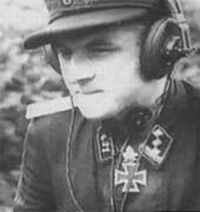
Michael Wittmann, the tank commander who caused the British much delay during their advance to Caen.
From 18 to 22 June it was very bad weather in Normandy. A storm raged over the area, which severely damaged even the Mulberry harbors. This caused the replenishments and supplies to stop. Meanwhile the Germans also brought extra people to the front to strengthen the defense. Another consequence of the storm was that the advance to Caen came to a halt, with the bad weather it was not possible to carry out a thorough attack on the city.
The British advance to Caen continued in the form of Operation Epsom. The XXX and VIII Corps had to advance in the direction of Caen. They were supported by about seven hundred pieces of artillery, three cruisers and the HMS Roberts (F40). In the beginning, some progress was made, but soon it became clear that Operation Epsom would not lead to the capture of Caen either. However, there was a gap in the German defense. The Germans made several counterattacks on the British attackers, but these were all repelled. Caen was still not in British hands, but by now the German defenders were so weakened that they could not make a significant counterattack on the Allied bridgehead.
Meanwhile, Caen was increasingly bombed by the Allied Air Force. Caen had already been bombed during the preparations for D-Day and the city should also have suffered on D-Day itself. The closer the British advanced, the more damage the city suffered during the fighting and bombardments. The I Corps launched a new attack on Caen and on 9 July, the city finally fell into British hands. In the city there was only German resistance in the form of snipers and some shelling from outside the city. Caen had only fallen into British hands more than a month after D-Day, more than a month later than planned.
Definitielijst
- Brigade
- Consisted mostly of two or more regiments. Could operate independently or as part of a division. Sometimes they were part of a corps instead of a division. In theory a brigade consisted of 5,000 to 7,000 men.
- D-Day
- The day of the long awaited invasion of western Europe in Normandy, France, 6 June 1944. After a long campaign of deception the allies attacked the coast of Normandy on five beaches to begin their march on Nazi Germany. Often explained as Decision Day, though this is entirely correct. The D stands for Day as generally used in military language. In this case it means an operation beginning on day D at hour H. Hence “Jour J“ in French.
- infantry
- Foot soldiers of a given army.
- resistance
- Resistance against the enemy. Often also with armed resources.
- shelling
- Indication for shooting targets with grenades. Both from artillery and armoured artillery.
Information
- Article by:
- Pieter Schlebaum
- Translated by:
- Fernando Lynch
- Published on:
- 03-05-2020
- Last edit on:
- 30-09-2024
- Feedback?
- Send it!
